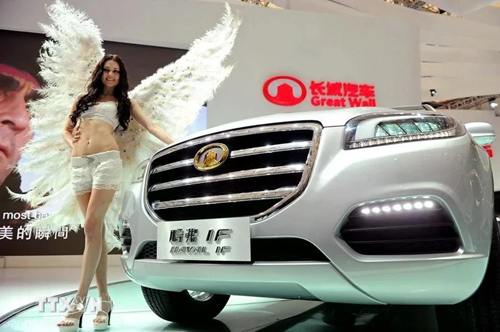According to the Oto.com.vn market research team under Nextgen Vietnam Joint Stock Company, about a decade ago, Chinese car brands like Zotye Z8, Beijing X7, and Brilliance V7 entered the Vietnamese market to limited success. But a new fleet of modern Chinese vehicles began to gain traction in the Vietnam market last year.
    |
 |
|
At an automotive exhibition in Shanghai, China |
Brands like Wuling, BYD, and Chery are quickly capturing consumer attention. Statistics show that more than 10 Chinese car brands are now distributing products in Vietnam.
When the Wuling Bingo was launched in November 2024, it garnered 18,000 searches on Google. Alongside this, searches for Chinese car prices surged at the end of 2024, especially as numerous models offered significant discounts. For example, the MG5 was reduced to 300 million VND, a shocking price in the C-segment sedan category.
Previously, Chinese cars were mainly viewed as backup options, but they have shifted into becoming sought after recreational units now. In the list of the 15 most inquired new models in 2024, alongside popular vehicles like Mitsubishi Xpander, Toyota Vios, and Mazda CX-5, two Chinese models - the MG5 and MG ZS, appeared with 4,207 and 3,849 inquiries, respectively.
Low prices, modern designs, and a wealth of technology are driving these vehicles into the limelight recently. Additionally, deep discounts of hundreds of millions of VND serve as a significant lever.
Despite the increasing attraction, Chinese cars still face significant hurdles regarding resale value. For example, MG - the most popular Chinese car brand in Vietnam, depreciates the fastest among its competitors. By the end of 2024, the MG HS model made in 2022 had depreciated by 33% from its original price, while the Hyundai Tucson depreciated by only 17% after two years.
The primary reason for the rapid depreciation of Chinese cars is the continuous discounting of new models, which also affects the prices of used cars. When the new MG ZS STD dropped by up to 120 million VND, it naturally pulled down the prices of used models, leading to faster depreciation compared to other brands.
In Vietnam, Chinese cars drive their way into the market encumbered with the stigma of low quality. Therefore, in buy-sell transactions, the time taken to successfully sell a Chinese car is often longer than for other models in the same segment.
Statistics indicated that used car showrooms needed an average of 23-29 days to sell an MG, whereas popular models like the Hyundai Creta, Kia K3, and Hyundai Tucson took only 16-20 days during the busy market of 2023.
However, in 2024, as the used car market slowed down, this gap narrowed to just two or three days, showing that Chinese cars are gradually shifting into a better position in the market.
Source: VNA